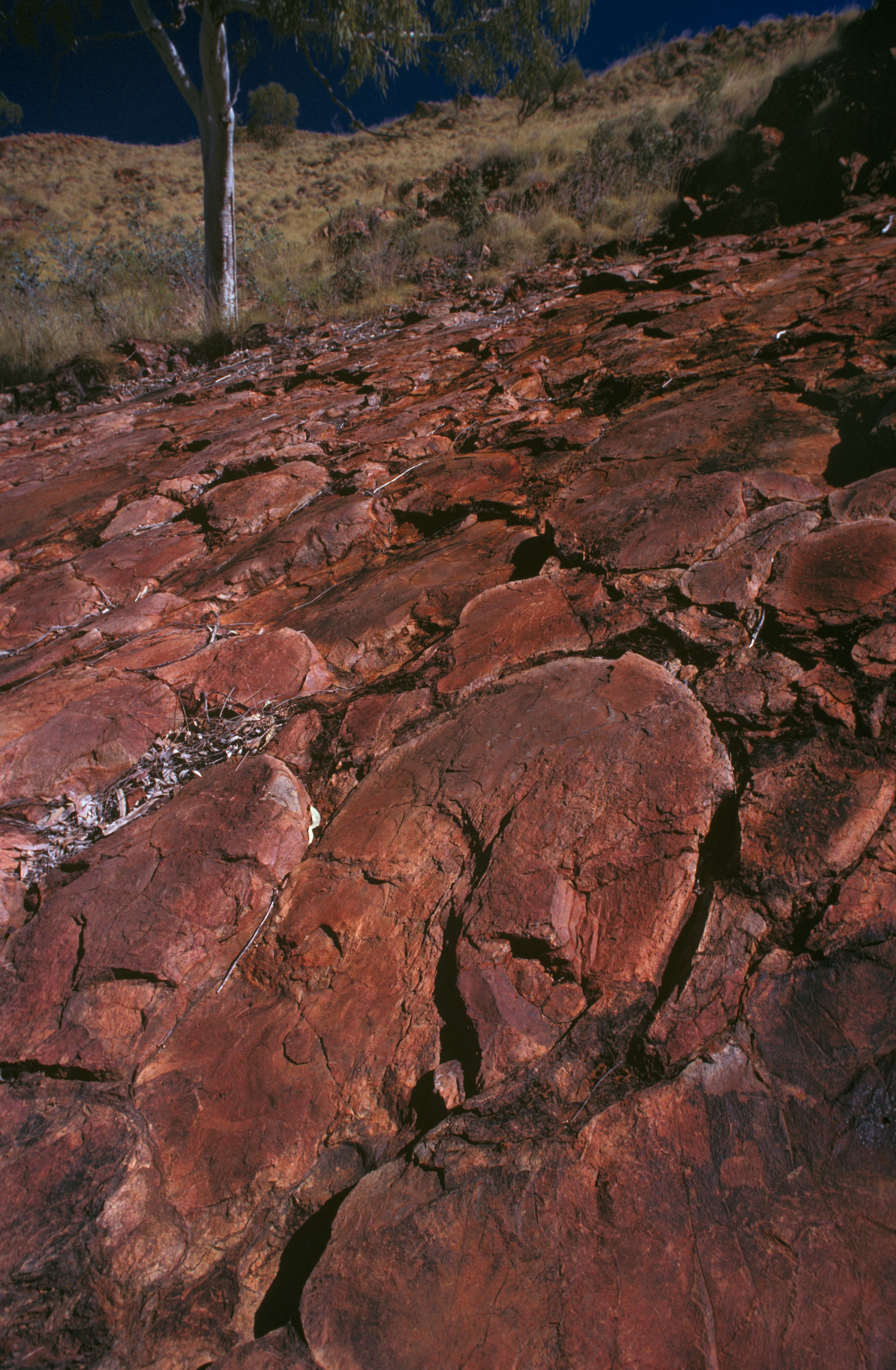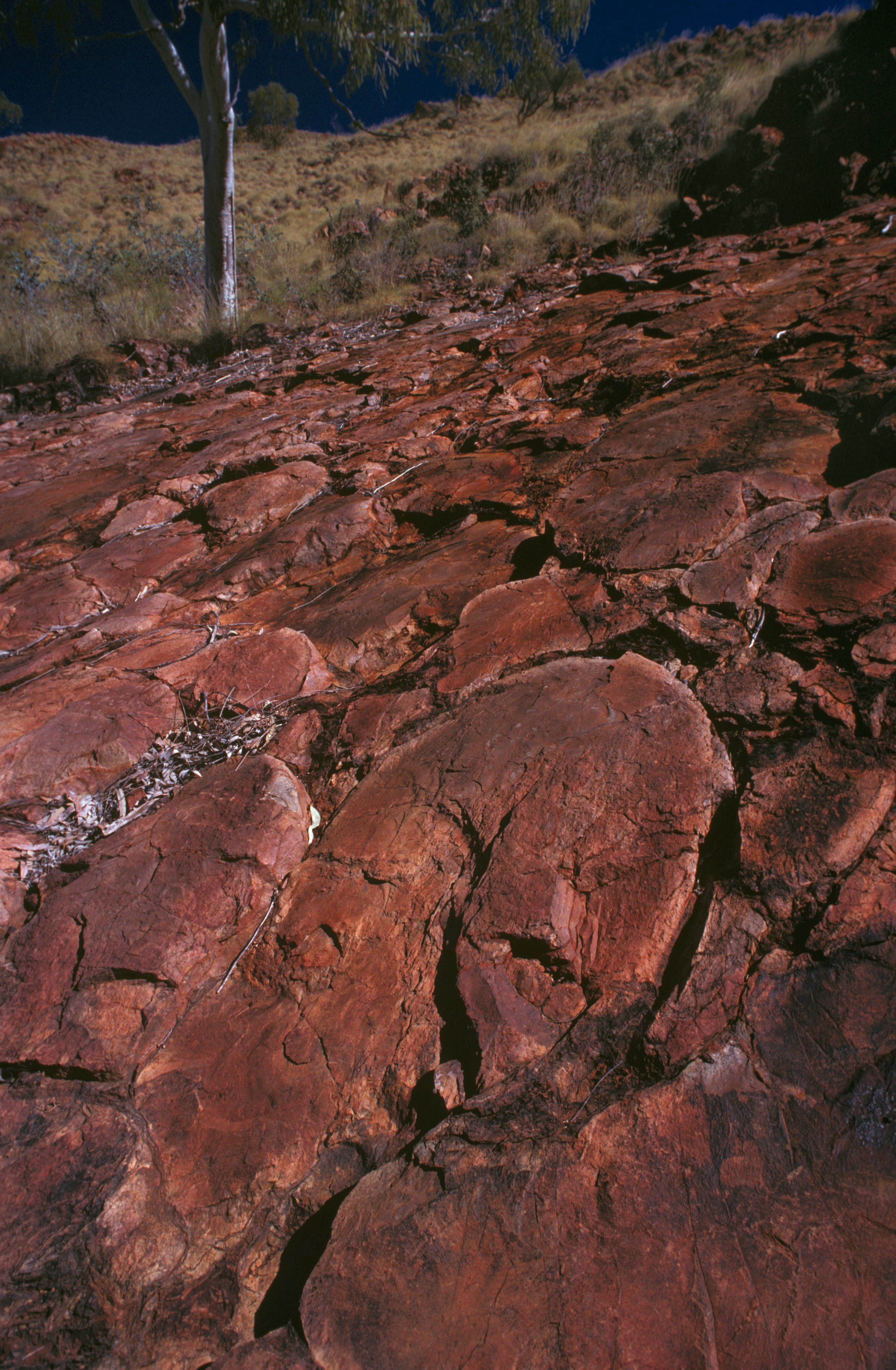
If scientists want to find aliens on Mars, they may need to start by looking at microscopic fossils in lava rocks here on Earth.
According to a recent study published in the journal Astrobiology, microscopic Triassic fossils hidden in cracks in seafloor basalt could show astrobiologists how to look for remains of long-ago life beneath the surface of Mars or even the icy moons of Saturn and Jupiter.
Really Tiny Signs of Life

An underwater volcano erupted 239 million years ago in what’s now Italy. Molten rock gushed out of the seafloor. But the seawater cooled the lava on contact, freezing it into round blobs of black rock. When the eruption was over, mounds of basalt “pillows” lay on the seafloor. Over time, small cracks in the basalt filled with calcium carbonate, a mineral found in seashells (and the much tinier shells of some plankton species). That calcium carbonate hardened into veins of calcite, which still hold the microscopic fossils of ancient microbes that once lived inside the cracks and pores of the cooled lava.
We already know that whole ecosystems of microbes thrive underground, making their homes in tiny spaces in sedimentary and igneous rock. Because such microbes are so abundant here on Earth, astrobiologists think they might be the most likely form of life on Mars, or maybe even more distant worlds. Learning how to find and study signs of long-extinct underground microbes here on Earth could help researchers plan the quest for ancient microfossils on Mars.
Yuanggao Qu, of the Chinese Academy of Sciences, and his colleagues examined samples from the Ladinian Fernazza in Italy and discovered that the calcite veins were teeming with “filaments, globules, nodules,” and even microscopic versions of stromatolites: layers of calcium oxide and sediment left behind by some species of bacteria, in this case, minuscule and shaped like a spread hand. The shapes looked a lot like the colonies that modern bacteria form. And when Qu and his colleagues examined the chemical makeup of the microstructures, they found traces of chemical residue that could match what microbes tend to leave behind.
That could be good news for future alien hunters on Mars, who can use microfossils (and ancient chemical residues) in Earthly rocks like the Ladinian Fernazza basalt to understand what the traces left behind by ancient rock-dwelling microbes might look like and what tools are best at finding them. Researchers looking for fossilized microbes in Mars rocks will need to be very sure that they’ve actually found traces of ancient Martian life, not modern contamination from Earth, and studying similar fossils here on Earth could help find ways to rule out contamination (before getting the whole planet excited about aliens).






